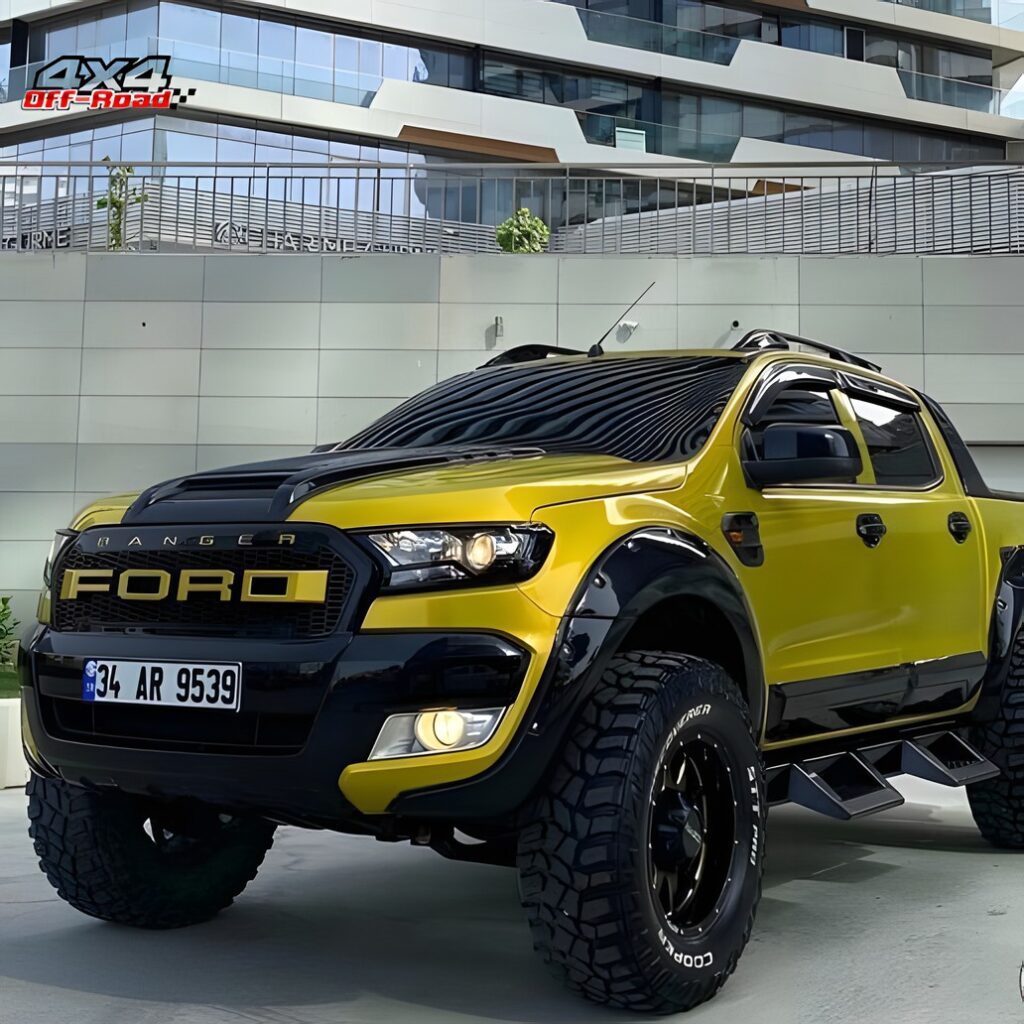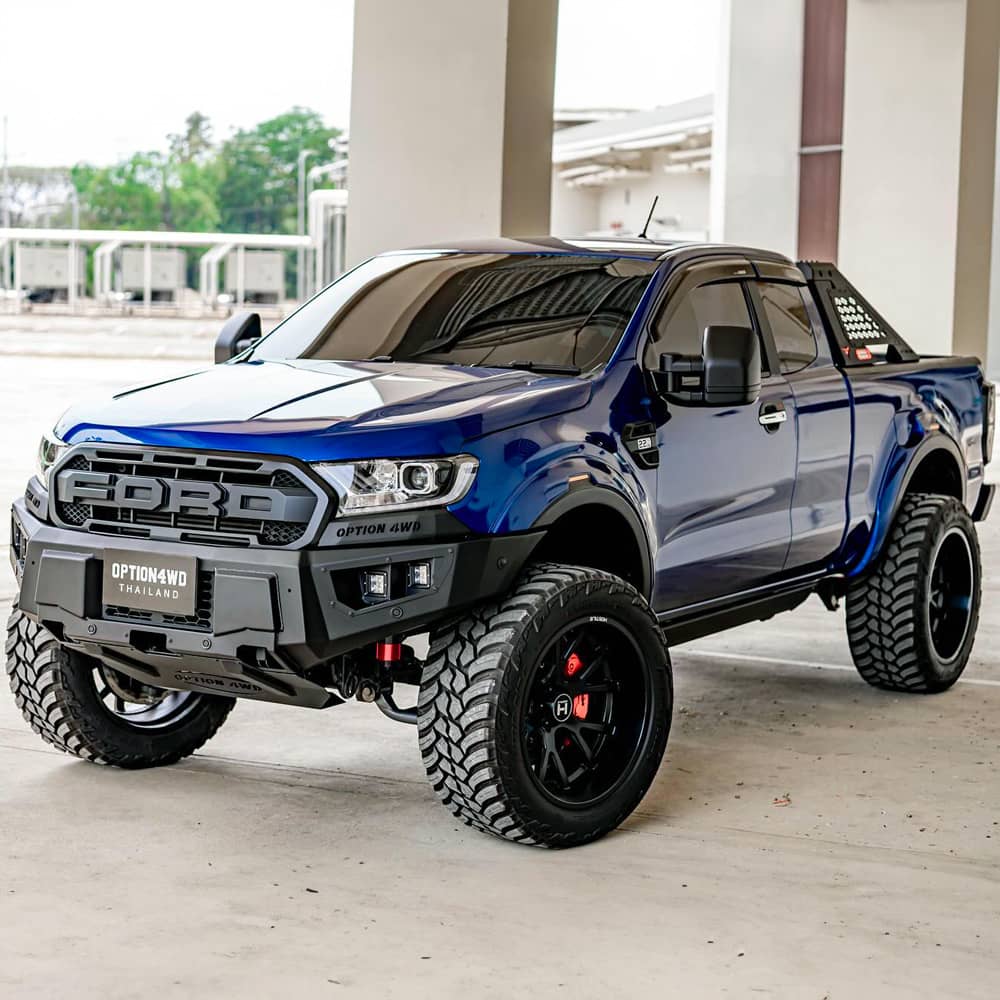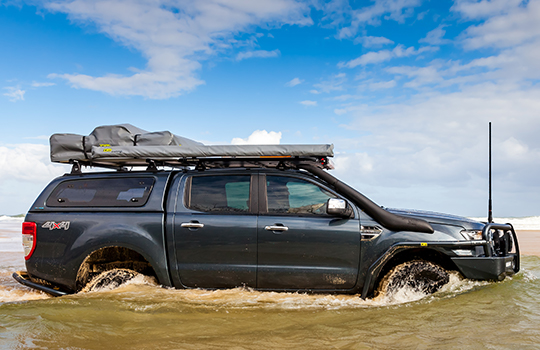Picture this: you’re cruising down a muddy trail, tires kicking up dirt like a kid splashing in puddles, and your truck looks like it just rolled out of a superhero movie. That’s the vibe I got the first time I saw a tricked-out Ford Ranger at an off-road meetup a few years back.
It was bright yellow, lifted so high I needed a step ladder to peek inside, and had a snorkel that made it look ready to ford a river—or maybe fight a dragon. I was smitten.
The Ford Ranger might not get the same hype as its bigger sibling, the F-150 Raptor, but let me tell you, this compact truck has some serious off-road chops, especially when enthusiasts get their hands on it.
Today, I’m diving into three little-known modifications that transformed the Ranger into an off-road beast. Buckle up—we’re going on a wild ride with some techy bits, a few laughs, and maybe a story or two from my own adventures.
Skid Plates in the Early 2000s—Armor for Your Ranger’s Soft Underbelly

Let’s start with a mod that’s like giving your Ranger a suit of armor: skid plates. Back in the early 2000s, off-road enthusiasts started realizing that the Ranger’s undercarriage was a bit… vulnerable.
Picture your truck as a knight charging into battle—except its belly is exposed, just waiting for a rogue rock or tree stump to deliver a fatal blow. Not cool. That’s where skid plates came in.
These are heavy-duty metal sheets bolted to the underside of the truck, protecting critical components like the engine, transmission, and fuel tank from getting bashed up on rough terrain.
The aftermarket scene in the early 2000s exploded with skid plate kits for the Ranger, especially for models like the 1998–2011 generations. Companies like ARB and Skid Row started offering steel or aluminum plates, often 3/16-inch thick, which could take a beating without breaking a sweat.
Installing a skid plate meant you could tackle rocky trails without wincing every time you heard a clunk underneath. It wasn’t just about protection, though—it gave drivers confidence to push their Rangers harder, knowing they wouldn’t end up stranded with a punctured oil pan.
I mean, who wants to be that guy on the trail, calling for a tow truck while everyone else is having fun?
I learned the hard way how important skid plates are. A buddy of mine, Jake, invited me on an off-road trip in his stock Ranger a few summers ago. We were bouncing along a trail in the mountains, feeling like kings of the wild, when—bam!—we hit a hidden rock.
I heard a sickening scrape, and Jake’s face went pale. We crawled under the truck and saw a dented oil pan, leaking like a sad little waterfall. Let’s just say our adventure ended with a long, awkward wait for a tow.
If Jake had a skid plate, we might’ve been sipping victory sodas at the top of the trail instead of eating dust on the side of the road. That mod might not be flashy, but it’s a game-changer for any Ranger looking to dominate off-road terrain.
Snorkel Kits in the 2010s—Letting Your Ranger Breathe Like a Deep-Sea Diver
Next up, let’s talk about a mod that makes your Ranger look like it’s ready to snorkel with the fishes: the snorkel kit. Around the 2010s, these started popping up on Rangers like mushrooms after rain, especially in places like Australia where off-roading is practically a national sport.
A snorkel is basically a raised air intake that attaches to the side of the truck, usually near the A-pillar, and routes air from up high down to the engine.
Why does that matter? Well, if you’re splashing through deep water or kicking up clouds of dust, a stock air intake—usually low near the wheel well—can suck in water or debris, which is basically a death sentence for your engine. A snorkel lets your Ranger breathe clean air, even when the going gets messy.
Brands like Safari and Airflow started making snorkels for the Ranger, especially for the 2011–2019 T6 models. These kits weren’t just functional—they added a rugged, “I mean business” vibe to the truck.
Picture a Ranger with a bright yellow body, black fenders, and a snorkel sticking out like a periscope—it’s the kind of truck that makes you want to grab a map and find the nearest river to ford.
The snorkel raises the air intake to roof height, so you can wade through water up to 30 inches deep without worrying about hydrolocking your engine. That’s the technical term for when water gets into the cylinders and stops the engine cold—kind of like giving your truck a really bad case of the hiccups, except way more expensive to fix.
I’ve always wanted to try a water crossing in a snorkel-equipped Ranger, but I’ll admit, I’m a bit of a chicken. My cousin Sarah, though? She’s fearless.
She has a 2015 Ranger with a snorkel, and last year she sent me a video of her plowing through a creek like it was a kiddie pool. The water was up to the hood, and I was holding my breath watching it, but her truck came out the other side like a champ, water dripping off the fenders while she whooped like she’d just won the lottery.
I asked her if the snorkel was worth it, and she said, “Heck yes—it’s like giving your truck gills!” I think she’s onto something. The snorkel isn’t just a mod; it’s a ticket to adventures you’d never dare try otherwise.
Lightweight Aluminum Fenders—Shedding Pounds Like a Ranger on a Diet

Finally, let’s talk about a mod that’s a bit more niche but oh-so-cool: lightweight aluminum fenders. In the world of off-road builds, weight is the enemy. The heavier your truck, the more it bogs down in mud, sand, or steep climbs. Starting around the mid-2010s, custom builders began swapping out the Ranger’s stock steel fenders for aluminum ones to shed pounds without sacrificing strength. Aluminum is about 30% lighter than steel but still tough enough to handle the bumps and scrapes of off-roading. Plus, it doesn’t rust, which is a big win if you’re constantly splashing through water or dealing with salty winter roads.
Companies like Fiberwerx and McNeil Racing started offering aluminum fenders for the Ranger, often as part of widebody kits that also gave the truck a more aggressive stance.
These fenders could shave off 20–30 pounds per side, which might not sound like much, but when you’re trying to claw your way up a muddy hill, every pound counts. The widebody design also let you fit bigger tires—think 33- or 35-inch off-road beasts—without rubbing the fenders.
More tire, more grip, more “I’m not getting stuck today” confidence. Some builders even powder-coated the aluminum in wild colors, turning the Ranger into a rolling piece of art that could still tackle the toughest trails.
I got to see a Ranger with aluminum fenders at a car show last year, and I was blown away. The owner had gone all out—bright blue fenders, a lifted suspension, and tires that looked like they could crush my little sedan without breaking a sweat.
I asked him why he went with aluminum, and he grinned and said, “It’s like putting your truck on a diet without starving it.” I laughed, but he was right. I could tell his Ranger was built to perform, not just to look pretty.
I did wonder, though—doesn’t aluminum dent easier than steel? He admitted it can, but said the weight savings were worth it for the trails he runs. Maybe I’m just too cautious, but I’d probably baby a truck that nice a little too much to take it off-road. Still, those fenders made that Ranger a true off-road beast, and I’ve been dreaming of building my own ever since.
Wrapping Up—Your Ranger’s Ready for the Wild!

So, there you have it—three mods that turned the Ford Ranger from a humble compact truck into an off-road monster that laughs in the face of mud, water, and rocks.
Skid plates gave it the armor to survive the roughest trails, snorkels let it breathe easy through deep water, and lightweight aluminum fenders trimmed the fat so it could tackle any terrain with agility.
Each of these mods shows how a little creativity and some clever engineering can transform a Ranger into something truly special.
If you’re thinking about building your own off-road beast, I’d say start with one of these mods and see where it takes you. Maybe hit up a local off-road group or check out some builds online for inspiration.
For me, I’m still daydreaming about that yellow Ranger I saw—it’s the kind of truck that makes you want to ditch the pavement and find the nearest trail.
I’ll leave you with a quote from off-road legend Ivan Stewart: “If you’re not living on the edge, you’re taking up too much space.” So go on, get out there, and let your Ranger live a little on the wild side!
